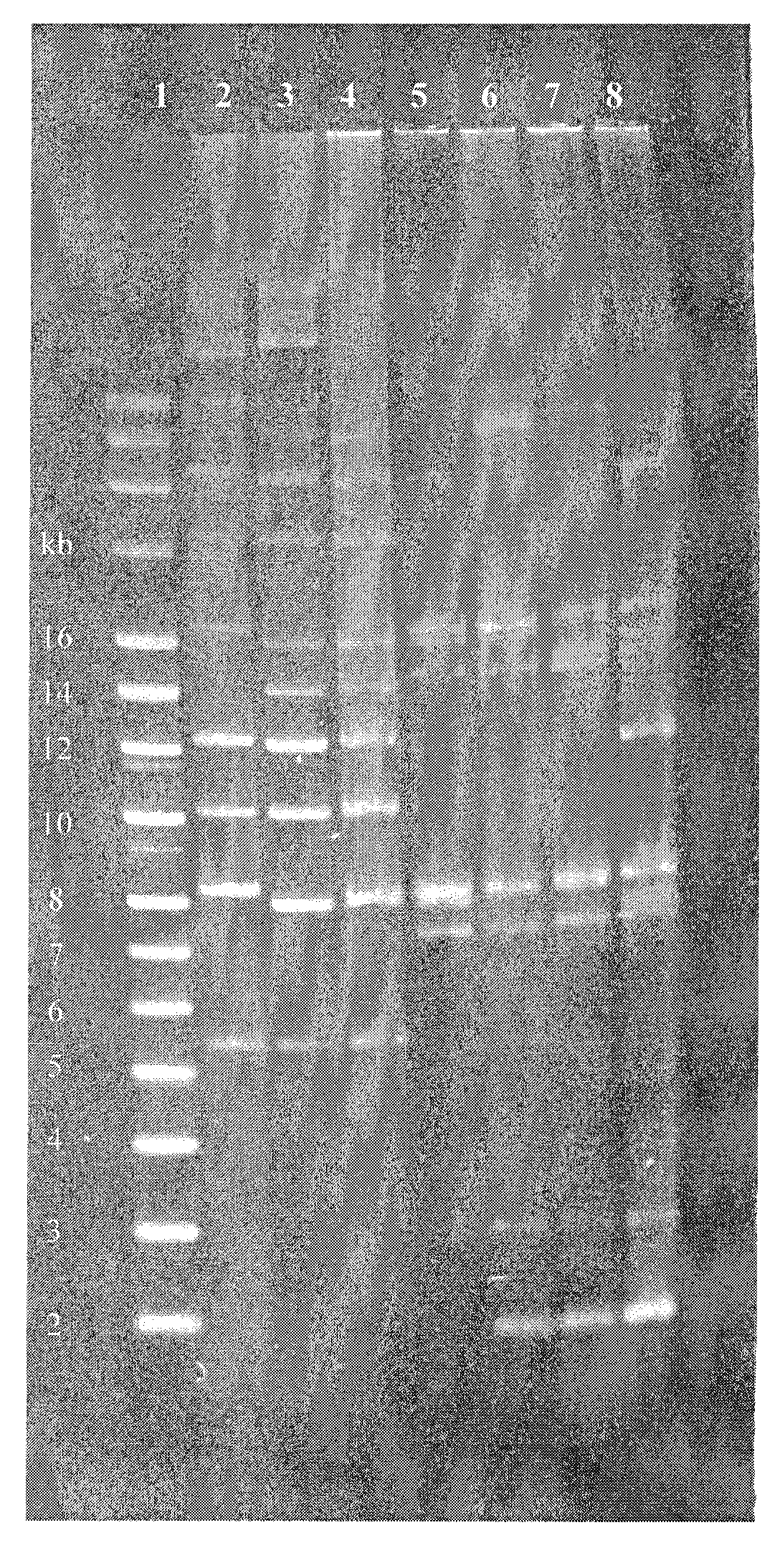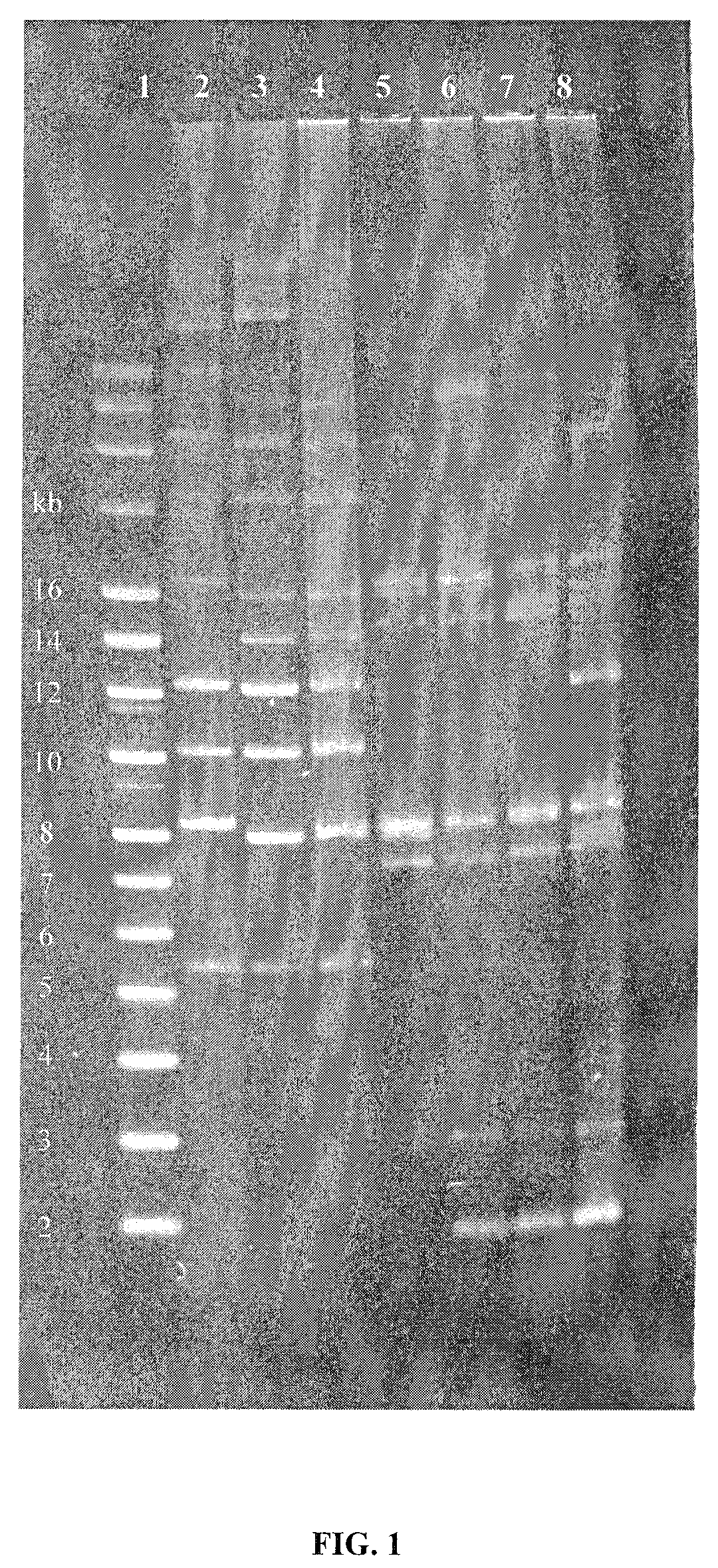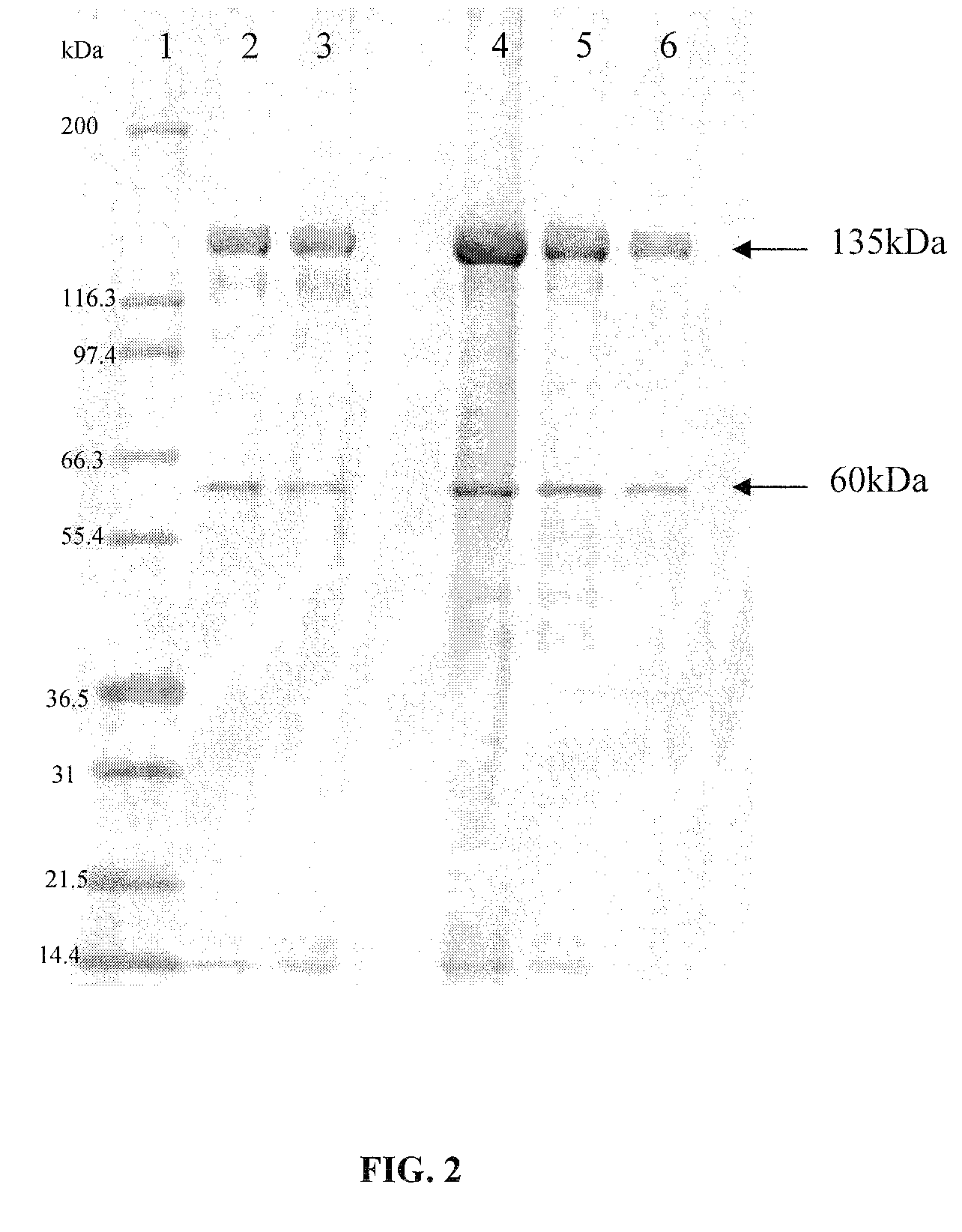Novel bacillus thuringiensis isolate
- Summary
- Abstract
- Description
- Claims
- Application Information
AI Technical Summary
Benefits of technology
Problems solved by technology
Method used
Image
Examples
example 1
Construction of VBTS 2528
[0040]The new strain of B. thuringiensis, VBTS 2528, has been constructed using well-known transconjugation techniques. These techniques are described, for example, in U.S. Pat. Nos. 4,935,353 and 5,080,897. Precursor strain VBTS 2517 was used to create VBTS 2528 strain. VBTS 2528 strain is a single colony isolated from VBTS 2517. VBTS 2517 has been deposited with the ATCC under Accession No. SD-6212. VBTS 2528 has been deposited with the ATCC under Accession No. SD-6209.
[0041]a) Construction of Precursor VBTS 2517 Strain
[0042]VBTS 2517 was constructed using VBTS 2436 and ABTS 7655 strains.
[0043]VBTS 2436 is one of the two isolates derived from ABTS 8019, natural isolate from the Abbott Laboratories, now Valent BioSciences Corporation, strain collection. ABTS 8019 was originally isolated from hickory leaf in Bristol, Wis. Using gene specific probes with known toxins, ABTS 8019 appeared to have the same genes as HD-1, a Bt strain of variety kurstaki (flagella...
example 2
Characterization of VBTS 2528
[0052]a) Plasmid Profile of VBTS 2528 and Control Strains
[0053]Plasmids were prepared from flask cultures of strains VBTS 2528, parent strains ABTS 7655, and VBTS 2436, control strains HD-1 and ABTS 1857, and competitor product isolates from CoStar® and Agree® products using the Qiagen HiSpeed® Plasmid Maxi Kit with modifications for Bacillus thuringiensis strains as described. Buffers were provided in the kit. Strains were grown overnight in 10 ml of LB (Luria broth) medium at 28-30° C. with shaking at 220 rpm. The culture was diluted 1:100 into 100 ml of LB medium in a 500 ml flask and grown for 4 hours with shaking at 220 rpm. The cells were harvested by centrifugation at 3000×g for 15 minutes at 4° C. The pellets were resuspended in 20 ml of Resuspension Buffer (P1) containing freshly added 100 μg / ml RNAse A and 5 mg / ml lysozyme and incubated at 37° C. for 1 hour with vigorous shaking (220 rpm). To each sample, 20 ml of Lysis Buffer (P2) was added, f...
example 3
Bioassays of VBTS 2517 and VBTS 2528
[0068]Bioassays were carried out at Abbott Laboratories, IL using 4-day old Trichoplusia ni (cabbage looper), 4-day old Plutella xylostella (diamondback moth), All bacterial treatments were incorporated into the diet. Two or three replications were conducted for each study. Each replication tested seven dose levels of Bt whole culture and an untreated control. For T. ni, 30 larvae were tested per dose. For P. xylostella, 40 larvae were tested per dose. Insects were incubated at 28°±2° C. for T. ni and 25°±2° C. for P. xylostella with a 12-h light / 12-h dark cycle for three days. Larval mortalities from the replications were pooled and using log-probit analysis, a single regression line was used to estimate the 50% lethal concentration (LC50).
[0069]Bioassays were also carried out at Benzon Research Inc., PA. Preparations were incorporated into a Stoneville type general noctuid diet without antibiotics for velvetbean caterpillars and tobacco budworms...
PUM
| Property | Measurement | Unit |
|---|---|---|
| Fraction | aaaaa | aaaaa |
| Fraction | aaaaa | aaaaa |
| Percent by mass | aaaaa | aaaaa |
Abstract
Description
Claims
Application Information
 Login to View More
Login to View More - R&D
- Intellectual Property
- Life Sciences
- Materials
- Tech Scout
- Unparalleled Data Quality
- Higher Quality Content
- 60% Fewer Hallucinations
Browse by: Latest US Patents, China's latest patents, Technical Efficacy Thesaurus, Application Domain, Technology Topic, Popular Technical Reports.
© 2025 PatSnap. All rights reserved.Legal|Privacy policy|Modern Slavery Act Transparency Statement|Sitemap|About US| Contact US: help@patsnap.com



